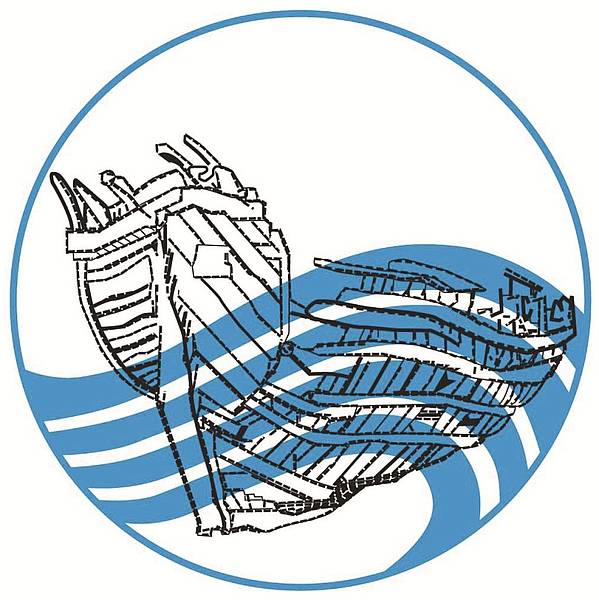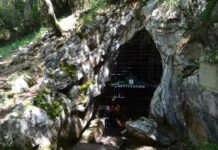This article was translated by John R. Bopp
The Windsor Star is a Canadian daily published in the city located just across the strait/border from Detroit.
They’ve just published an article on a Basque ship that has become one of the most brilliant jewels in undersea archaeology. We’re referring to the San Juan galleon, a whaler built in Pasajes which sank in Red Bay, Labrador, Canada in the summer of 1565, when, loaded up with whale oil, it set sail for home on the Basque coast.
In 1978, some archaeologists discovered an oaken board that was the clue that took the researchers to the remain of the ship that had sunk 400 years previously. We’ll leave you with two documents. One is a technical one about the discovery of the whaling ship and the other is a generic one about Basque whalers.
And it seems to be that exactly 450 (plus one) years after it was sunk, and thanks to the work of Albaola, this Basque ship, or rather a perfect replica of it, will again sail the waters of the Bay of Biscay on a path that we’re sure will again take it to the coast of Labrador. But this time, its goal won’t be filling its hold with whale oil, but rather to transmit the culture and good relations between two lands that were formerly united by Basque sailors. This is all the perfect excuse offered by an event as prestigious as that of San Sebastian being named the European Capital of Culture in 2016.

This discovery of this Basque vessel is so scientifically important that the UN has used its image as the logo of the UNESCO Underwater Cultural Heritage program.
Windsor Star – 18/2/2013 – Canada
Canada’s oldest shipwreck to be resurrected in replica of 16th-century Basque galleon

t’s the oldest shipwreck ever found in Canada and one of the most important in the world: a 16th-century Basque whaling galleon that lies at the bottom of Labrador’s Red Bay, a sunken relic from the Age of Discovery that symbolizes the early spread of European civilization — and commerce — to the New World. Now, the 450-year-old San Juan, a jumble of thick beams and broken barrels lying in shallow waters off the site of a 1560s-era whaling station in the Strait of Belle Isle, is to be resurrected by a team of Spanish maritime heritage experts planning to construct a full-scale, seaworthy replica of the original 16-metre, three-masted vessel.
(Sigue) (Traducción automática)
This link is dead. Here’s the new one:
Canada.com – 18/2/2013 – Canada
Canada’s oldest shipwreck to be resurrected in replica of 16th-century Basque galleon
It’s the oldest shipwreck ever found in Canada and one of the most important in the world: a 16th-century Basque whaling galleon that lies at the bottom of Labrador’s Red Bay, a sunken relic from the Age of Discovery that symbolizes the early spread of European civilization — and commerce — to the New World.
(Follow) (Automatic translation)
UNESCO – ONU
Patrimonio Cultural Subacuático
El patrimonio cultural subacuático comprende todos aquellos rastros de existencia humana que estén o hayan estado bajo el agua, parcial o totalmente y que tengan un carácter cultural o histórico. Reconociendo la creciente necesidad de proteger este patrimonio, la UNESCO elaboró en 2001 la Convención de la UNESCO sobre la Protección del Patrimonio Cultural Subacuático.
(Follow) (English)
Wikipedia – USA
History of Basque whaling
The Basques were the first to commercially hunt whales. For five centuries they dominated the trade, spreading to the far corners of the North Atlantic and even reaching the South Atlantic. The French explorer Samuel de Champlain, when writing about Basque whaling in Terranova, described them “as the cleverest men at this fishing”.[1] By the early 17th century other nations entered the trade in earnest, seeking the Basques as tutors, “for [they] were then the only people who understand whaling”, lamented the English explorer Jonas Poole. Having learned the trade themselves, other nations usurped their techniques and soon dominated the burgeoning industry – often to the exclusion of their former instructors. Basque whaling peaked in the late 16th and early 17th centuries, but was in decline by the late 17th and early 18th centuries. By the 19th century it was moribund.
(Follow) (Automatic translation)
————————————-
Gipuzkoakultura- Euskadi
La nao San Juan. Siglo XVI

ipuzkoa posee la concentración más importante de dinteles representando naves del siglo XVI. La extraordinaria calidad de sus labras nos aporta una información muy valiosa sobre las características de los barcos de esta época. Gracias al descubrimiento y estudio del pecio de la nao ballenera San Juan, de Pasaia, hundida en Red Bay en 1565, conocemos los detalles de la construcción naval vasca del siglo XVI. En esta época de expansión oceánica las rutas de navegación son considerablemente más largas y es necesario optimizar la capacidad de carga.
(Follow)
Last Updated on Dec 20, 2020 by About Basque Country































